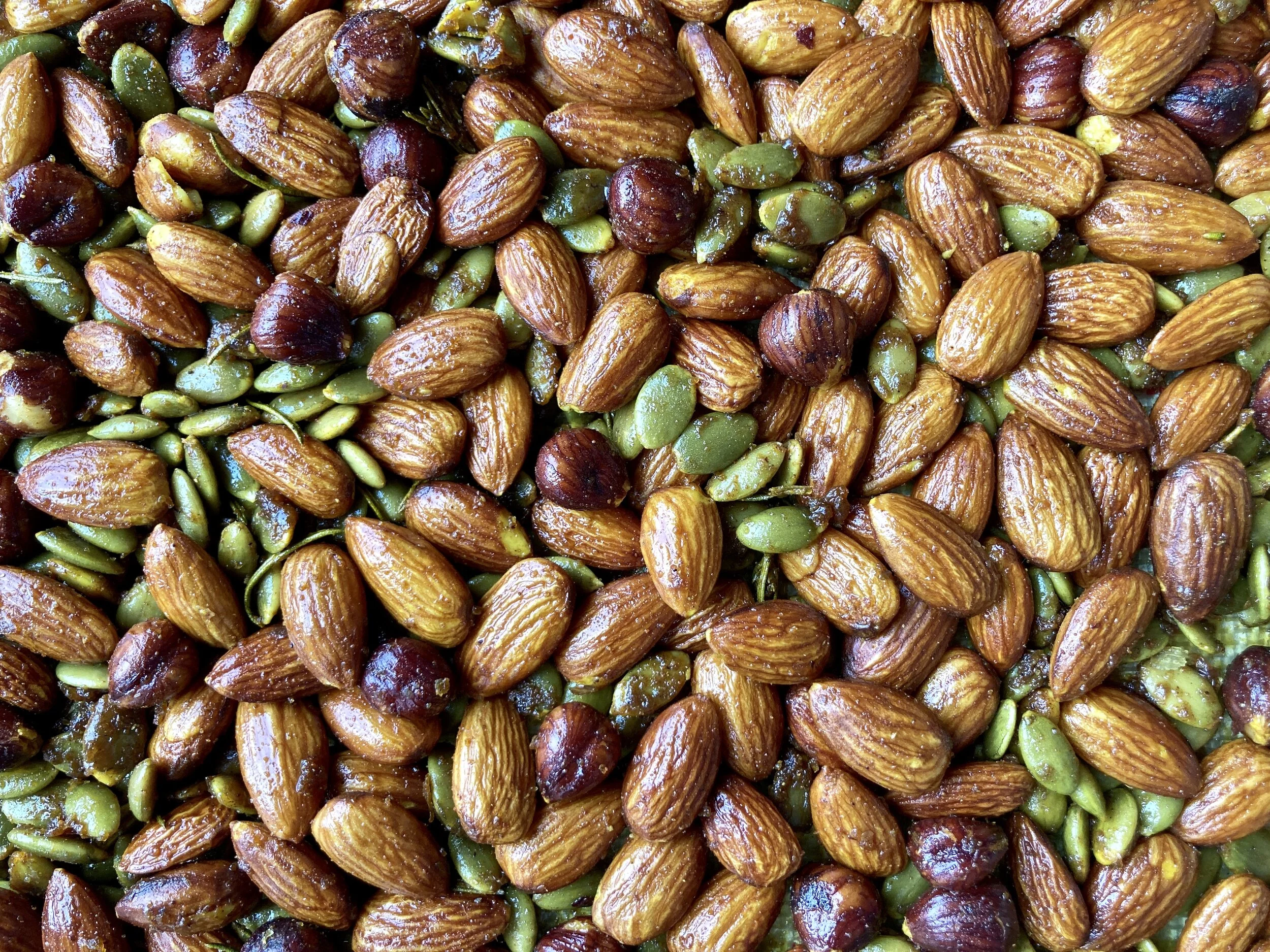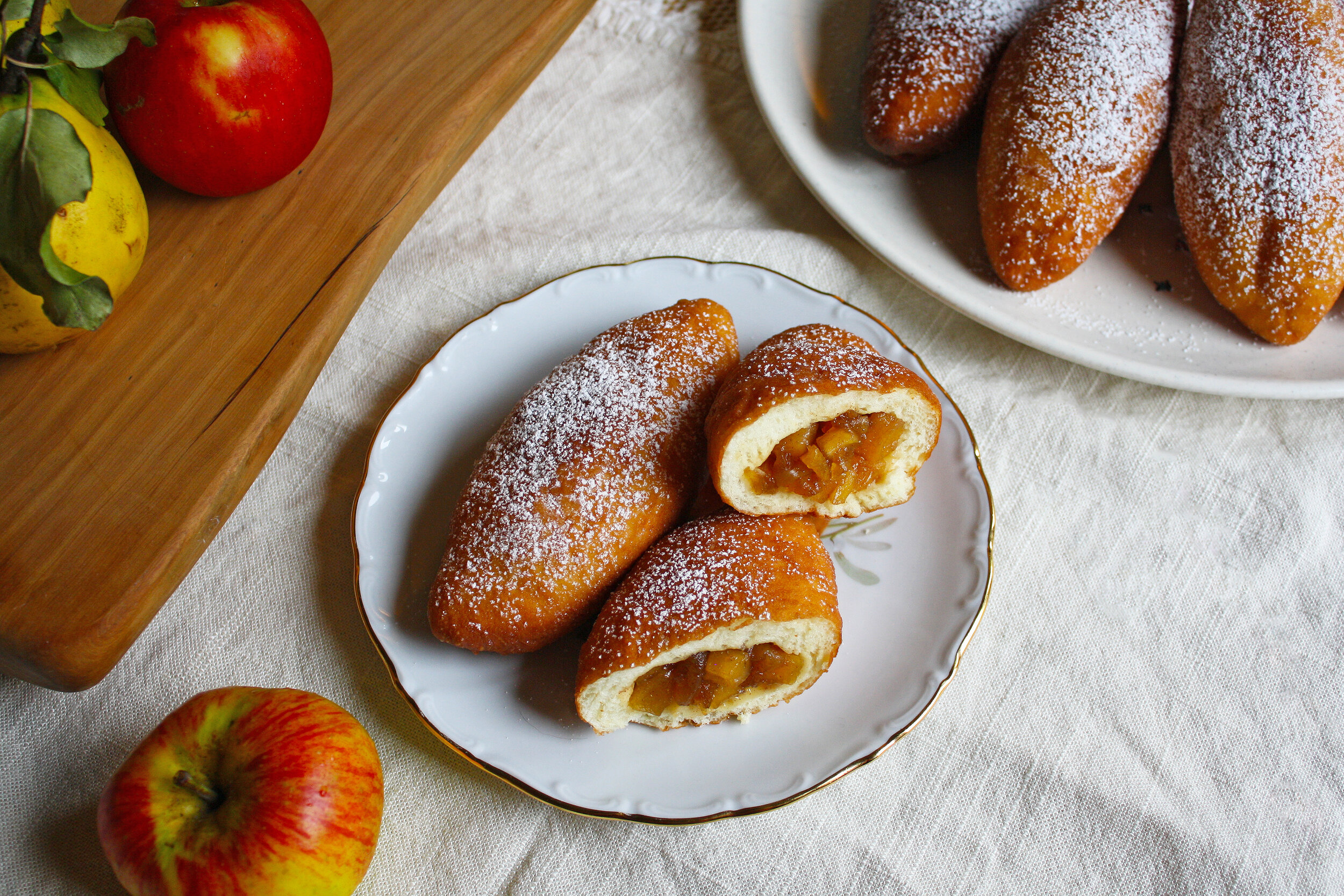Apple Sharlotka is a popular Russian and Polish apple cake that is easy to prepare and requires only a handful of ingredients. This dessert is dense with apples, but the cake surrounding the fruit is light and airy.
Sharlotka comes from a style of cake or trifle called “Charlotte Cakes,” which are typically made with ladyfingers or sponge cake. The first apple Sharlotka is credited to a French chef, who prepared it in honor of the wife of Tsar Alexander I of Russia. While early versions of Sharlotka were decadent and complicated, over time the cake has evolved into a simple treat that can be easily baked at home. My own Ukrainian grandmother made apple Sharlotka more than any other cake, likely due to the fact that it is as easy to make as it is comforting and delicious. Along with a few apples, the batter is made all in one bowl with eggs, sugar, flour, and vanilla.
Apple Sharlotka is best made with sweet and tart Granny Smith apples, or an heirloom apple, like Winesap. When the cake comes out of the oven it will have a crisp and crackly crust on top that softens the longer it sits. Just before serving, shower the cake with powdered sugar for added sweetness on top.
Apple Sharlotka
Serves 8-10
Ingredients:
3-4 (1.5 lbs/680 g) medium apples, like Granny Smith
juice of ½ a lemon
3 large eggs
1 cup (220 g) sugar
2 tsps vanilla extract
¼ tsp salt
1 cup (130 g) all-purpose flour (or sub with 1:1 gf flour)
powdered sugar, as needed
Directions:
Preheat the oven to 350°F. Grease and line a 9” springform pan with parchment paper; you can also use e a 9” round or square baking pan for this recipe.
Peel and core the apples. Cut the apples into 1” pieces, about ¼”-thick. Toss the apples in lemon juice, and then add them to the baking dish.
In a large bowl using a hand mixer, or in a stand mixer fitted with the whisk attachment, combine the eggs and sugar. Alternatively, you can beat the eggs and sugar by hand using a whisk. Beat until the eggs are pale, fluffy, and have doubled in size, about 3-4 minutes. Add the vanilla extract and beat for one more minute.
Sift in half of the flour and salt to the egg mixture, and fold the dry ingredients into the batter. Sift in the remaining flour and salt, and fold them in until they are just incorporated. Be careful to gently fold in the dry ingredients, and to not overmix the batter.
Pour the batter over the apples in the baking dish. If needed, use a spatula or spoon to smooth the batter over the top so it evenly covers the apples.
Bake for 45-50 minutes until golden brown and firm on top, or until a cake tester comes out clean. Allow the cake to cool for at least one hour prior to serving.
Before serving, sprinkle the cake with powdered sugar. Sharlotka can be made a day in advance and stored covered at room temperature, the crust will soften as it sits.






































